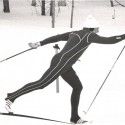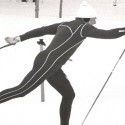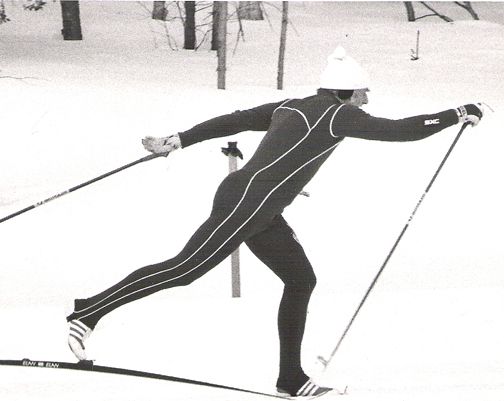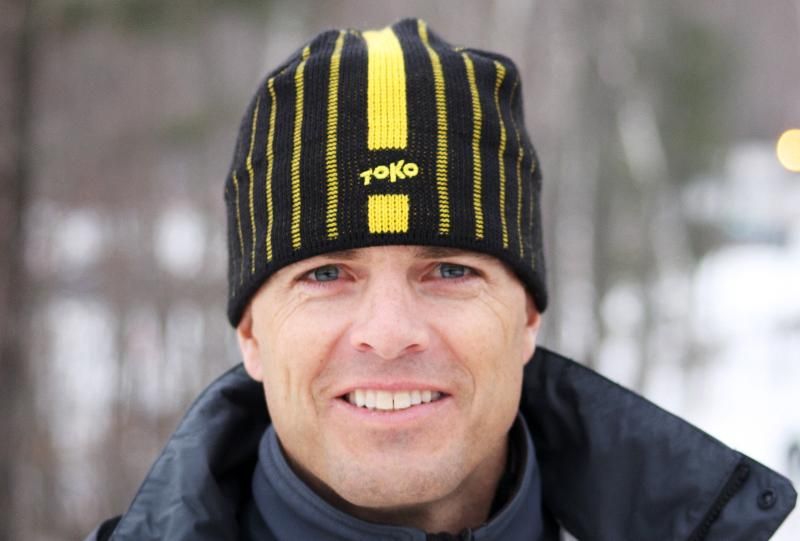February 23, 2011 – The wax techs at Swix US have compiled a preliminary wax recommendation report in anticipation of this weekend’s American Birkebeiner, taking into account current weather forecasts and course conditions. Stay tuned with more updates at Birkie Expo, SwixRacing.us, and Facebook/SwixNordic.
FORECAST
– Thursday Feb. 24th- Mostly Sunny throughout the day with a forecasted high of 28ºF.
– Thursday Night- Mostly Cloudy with a low of 8ºF. North wind between 5-10 mph.
– Friday Feb. 25th- Cloudy with a 20% chance of snow showers. Forecasted high of 19ºF.
– Friday Night- Mostly Cloudy with a slight chance of snow showers. Forecasted low of -4ºF.
– Saturday Feb. 26th- Mostly Cloudy with slight chance of snow showers. Forecasted high of 17ºF.
COURSE CONDITIONS
The track should be hard and compact. Snow crystals will be a mix of some new and fresh snow crystals (types 1 and 2 in the Swix Classification System), along with mostly old, transformed snow crystals (type 3) making up the majority of the snow crystals in the track . Tilling should mix these snow crystals together. The snow will be abrasive with some dirt present in the snow pack, due to the freeze/thaw cycle of last week.
WAXING CONSIDERATIONS
1. Base Preparation
Clean glide zones with Swix Base Prep 99- BP99 using the “hot scrape” method. Scrape the BP-99 while still molten with a sharp, clean plastic wax scraper- T0824D. Let the skis cool, then brush out the skis with Swix Fine Steel Brush- T192. This will open the base pores of the ski.
If you will be using or use Swix Cera F and or Swix HF waxes, we recommend using Swix Cleaner for Flour Glide Wax and Conditioner- I0084. Wipe the base with I84 using a piece of Fiberlene. While the base is still wet, brush and scrub from tip to tail with a Swix Nylon White Brush- T0161. Using a new, clean piece of Fiberlene, wipe the ski base clean and let dry for 5-7 minutes, then brush with the Swix Ultra Fine Steel Brush- T191. The very fine steel bristles of this brush throughly clean the base structure of the ski base.
2. Durability
Given the length of the race and the aggressive nature of the snow crystals on the race track, it will be important to build strong and solid base layers into the ski base, prior to the HF and Cera F wax layers. The first step is to use Swix Moly Flouro Wax- MB77. Apply one layer of MB77, let cool then scrape and brush. Brush with the Fine Steel Brush, then polish with the Swix Blue Nylon Brush- T0160
Next, apply one layer of Swix LF4, scrape and brush, using the same method as the MB-77. NOTE- because LF4 is a hard glide wax, it is possible and recommended to scrape this wax while it is still warm to the touch.
3. Ski Selection and Structure
Expect the race track and snow to be firm. Use a medium to stiff flex ski that will be stable in hard pack snow conditions. Fine to medium fine base structures will work well. If you need to add structure, use the Swix T0403 Economy Structure tool with the 0.3mm Broken-V structure roller. Apply the 0.3mm Broken-V structure roller after final waxing and brush with Swix Blue Nylon Brush- T0160
FAST LANE TO HAYWARD Waves Elite & 1-5
Base HF wax layers:
Apply one layer of NEW Swix Marathon Wax- DHF104BW. The Marathon Wax is a highly durable wax for aggressive snow crystals and has a High Flouro content and BW additive to resist dirt. Iron at 140ºC, let cool 4-6 minutes, then scrape and brush using first the Swix Fine Steel Brush- T0192 then the Swix Ultra Fine Steel Brush- T0191. Using both brushes properly removes all excess wax and reveals ski base structure. Polish with Swix Blue Nylon Brush- T0160.
Apply one layer of Swix HF4BW. Iron at 150ºC, let cool 4-6 minutes, then scrape and brush using above method.
Race Cera F layer:
Apply Swix FC7 Cera F Powder. Iron in with one pass (5-7 seconds) with iron temperature at 160ºC. Let cool 3-5 minutes, then brush up the ironed in powder using Swix Black Nylon Brush- T0194. Iron a second time using the same process. Let cool 5 minutes. Brush out with Swix Wild Boar Brush- T0164 and polish with Swix Blue Nylon Brush.
FAST LANE TO HAYWARD Waves 6-10
Base HF wax layers:
Apply one layer of NEW Swix Marathon Wax- DHF104BW. The Marathon Wax is a highly durable wax for aggressive snow crystals and has a high Flour content and BW additive to resist dirt. Iron at 140ºC, let cool 4-6 minutes, then scrape and brush using first the Fine Steel Brush- T0192 then the Ultra Fine Steel Brush- T0191. Using both brushes properly removes all excess wax and reveals ski base structure. Polish with Swix Blue Nylon Brush- T0160.
Apply one layer of Swix HF6BW. Iron at 140ºC, let cool 4-6 minutes, then scrape and brush using above method.
Race Cera F layer:
Apply Swix FC78 Super Cera F Powder. Iron in with one pass (5-7 seconds) with iron temperature at 165ºC. Let cool 3-5 minutes, then brush up ironed in powder using Black Nylon Brush- T0194. Iron a second time using the same process. Let cool 5 minutes. Brush out with Wild Boar Brush- T0164 and polish with Blue Nylon Brush.
PERFORMANCE PRO Waves 1-5
Base HF wax layers:
Apply two layers of Swix HF4BW. Iron each layer at 150ºC, let cool 4-6 minutes, then scrape and brush throughly using the Fine Steel Brush- T0192 first, then the Ultra Fine Steel Brush- T0191 second. Polish with the Blue Nylon- T0160.
Race Cera F layer:
Apply Swix FC7WS Turbo Solid Block. Rub on one thick layer and iron in at a temperature of 160ºC with one quick pass tip to tail. Let cool 5 minutes and brush out with Wild Boar Brush- T0164, then polish with Blue Nylon. Run on a second layer and hand cork in with Swix Natural Cork- T0020 or T0021. Brush out with Wild Boar then polish with Blue Nylon.
PERFORMANCE PRO Waves 6-10
Base HF wax layers:
Apply two layers of Swix HF6BW or HF6. Iron each layer at 140ºC, let cool 4-6 minutes, then scrape and brush throughly using the Fine Steel Brush- T0192 first, then the Ultra Fine Steel Brush- T0191 second. Polish with the Blue Nylon- 0160.
Race Cera F layer:
Apply Swix FC7WS Turbo Solid Block. Rub on one thick layer and iron in at a temperature of 160ºC with one quick pass tip to tail. Let cool 5 minutes and brush out with Wild Boar Brush- T0164, then polish with Blue Nylon. Run on a second layer and hand cork in with Swix Natural Cork- T0020 or T0021. Brush out with Wild Boar then polish with Blue Nylon.
PERFORMANCE Waves 1-5
Base LF wax layer:
Apply one layer of Swix LF4. Iron at 150ºC, let cool 4-6 minutes, then scrape and brush throughly using the Swix Fine Steel Brush- T0192. Polish with the Blue Nylon Brush- T0160.
Race HF wax layers:
Apply two layers of Swix HF4BW. Iron at 150ºC, let cool 4-6 minutes, then scrape and brush throughly using the Fine Steel Brush, then polish with the Blue Nylon. Repeat the process.
PERFORMANCE Waves 6-10
Base LF wax layer:
Apply one layer of Swix LF6. Iron at 140ºC, let cool 4-6 minutes, then scrape and brush throughly using Swix Fine Steel Brush- T0192. Polish with the Blue Nylon Brush- T0160.
Race HF wax layers:
Apply two layers of Swix HF6BW or HF6. Iron at 140ºC, let cool 4-6 minutes, then scrape and brush throughly using Swix Fine Steel Brush- T0192. Polish with the Blue Nylon Brush- T0160. Repeat the process.
KICK WAX APPLICATION
As the race is still 4 days away, it is difficult to predict the exact kick wax for the Birkie. There are two main options that are possible based on the developing weather: hardwax binder and hardwax race kick wax or klister binder and hardwax race kick wax. See the details below for the recommended waxes on both options. Swix will be at the Expo for waxing advice, tips and clinics.
KICK ZONE PREPARATION
Remove old kick wax with a kick wax scraper and clean the kick zone with Swix Wax Remover and Swix Fiberlene. Let the base dry. Use 80 or 100 grid sandpaper and texture the kick zone by sanding the zone in a manner parallel to the groove in the ski base. The Swix T0011 Cork and Sandpaper combi tool is ideal for this process. A typical adult kick zone is 65-75cm from the back of heel forward. A typical adult klister zone is 60-65cm from the front of the heel forward.
BASE KICK WAX- Hardwax binder (if the surface is mainly fresh snow)
Apply one (1) solid and even layer of Swix VG35 Base Wax. Iron in at 110ºC. The binder should have a smooth and even consistency after ironing. Smooth out any lumps with a thumb or cork. Make sure that the binder layer in the front and the back of the kick zone makes a smooth and gradual transition with the glide zone. Let cool 5-10 minutes outdoors. Apply one (1) layer of Swix V40 Blue Extra. Cork smooth.
BASE KICK WAX- Klister binder (if no new snow is present)
Apply one (1) thin, even layer of Swix KB020 Base Klister Spray. Smooth even with a thumb or cork. Let cool 5-10 minutes outdoors. Apply one (1) thin, even layer of KR35 Violet Special Klister. Use an iron set at 110ºC to smooth even. Let cool 5-10 minutes outdoors. The klister layer should be hard and leave a finger print when touched. Apply two (2) thin layers of Swix VR30. Cork very smooth and be gentle when corking. It is best to cork the hardwax layers outdoors, to keep the wax from becoming too warm. For Waves 6-10, use VR40. These skis are ready to race on!
RACE KICK WAX- For Hardwax Binder
Waves Elite & 1-5: Apply 5-7 thin layers of Swix VR30. Cork smooth. If added kick is needed, add one layer of VR40 underneath the foot to 15cm in front of the binding. It is recommended to cork outdoors to keep the wax cold.
Waves 6-10: Apply 5-7 thin layers of Swix VR40. Cork smooth. If added grip is needed, add one layer of VR45 underneath the foot to 15cm in front of the binding. It is recommended to cork outdoors.
 January 28, 2013 – While it sometimes doesn’t feel like it with the lack of snow, we’re jumping into the thick of the race season and there are a lot of events in the coming weeks. Over the next two months, Boulder Nordic Sport (BNS) will be providing race service around the United States, at Masters’ World Championships in Asiago, Italy, as well as providing wax recommendations for a huge selection of races, big and small. Check bouldernordic.com for the latest wax recommendations and racing updates.
January 28, 2013 – While it sometimes doesn’t feel like it with the lack of snow, we’re jumping into the thick of the race season and there are a lot of events in the coming weeks. Over the next two months, Boulder Nordic Sport (BNS) will be providing race service around the United States, at Masters’ World Championships in Asiago, Italy, as well as providing wax recommendations for a huge selection of races, big and small. Check bouldernordic.com for the latest wax recommendations and racing updates.




![Toko Coreteam Developing New Products (l-r): Heinz Kolly, Marco Coppi, Christian Stalder, Christoph Schober, Ian Harvey, Not pictured Thomas Knecht [P] Toko](http://skitrax.com/wp-content/uploads/2012/04/Toko-Coreteam-361.2.jpg)
![Marty Hall [P] Kathy Hall](https://skitrax.com/wp-content/uploads/2011/12/Marty-Hall-DSCN0265.2-200x254-125x125.jpg)



![West Yellowstone will also host the USSA SuperTour opener. [P] courtesy of Yellowstone Ski Festival](http://skitrax.com/wp-content/uploads/2011/09/SuperTour-1.jpg)
![Festivities continue after dark at the Indoor Expo. [P] courtesy of Yellowstone Ski Festival](http://skitrax.com/wp-content/uploads/2011/09/Indoor-Expo.jpg)
![We are constantly exploring new wax formulations. Now we are developing new waxes with completely new raw materials. [P] Ian Harvey](http://skitrax.com/wp-content/uploads/2011/04/wax.jpg)

![Roman Toferer was not the only one who was happy with the results. Norway's Tord Gjerdalen landed his first individual podium finish at the Worlds. [P] courtesy of Atomic](http://skitrax.com/wp-content/uploads/2011/03/TOFERER.jpg)
![Nice wax facility with over 400 pairs of skis. [P] courtesy of Atomic](http://skitrax.com/wp-content/uploads/2011/03/Waxing1.jpg)
![Roman used the world championships as a chance to introduce new waxless technology the world's elite! [P] courtesy of Atomic](http://skitrax.com/wp-content/uploads/2011/03/Roman.jpg)
![Medalists like Franz Goering were not only willing to test new technology like the HT ski, they chose to race on it as well. [P] courtesy of Atomic](http://skitrax.com/wp-content/uploads/2011/03/Medalist.jpg)
![The world championships give companies the chance to meet with the best in the world for testing and feedback. [P] courtesy of Atomic](http://skitrax.com/wp-content/uploads/2011/03/Feedback.jpg)
![Brian Gregg greeting his fiance Caitlin Compton as she wins the Birkie. [P] David Owen](http://skitrax.com/wp-content/uploads/2011/03/birkie_compton_wins-200x133.jpg)
![Chart #1. [P] Toko US](http://skitrax.com/wp-content/uploads/2011/02/1-200x134.jpg)
![Chart #2 [P] Toko US](http://skitrax.com/wp-content/uploads/2011/02/21-200x133.jpg)
![Chart #3 [P] Toko US](http://skitrax.com/wp-content/uploads/2011/02/3-200x275.jpg)
![CXC Train at the front of the pack. [P] Toko US](http://skitrax.com/wp-content/uploads/2011/02/cxctrain.jpg)
![Caitlin Compton and Martina Stuber off the front. [P] Toko US](http://skitrax.com/wp-content/uploads/2011/02/compton_stuber.jpg)
![Evelyn Dong enroute to winning the Boulder MT Tour. [P] Toko US](http://skitrax.com/wp-content/uploads/2011/02/dong.jpg)
![Liz Stephen [P] Ian Harvey/Toko](http://skitrax.com/wp-content/uploads/2011/01/Stephen-IMG_6652-298x237.jpg)
![Tad Elliot [P] Ian Harvey/Toko](http://skitrax.com/wp-content/uploads/2011/01/Elliot-IMG_6561.jpg)
![Bryan Cook [P] Ian Harvey/Toko](http://skitrax.com/wp-content/uploads/2011/01/B_Cook-IMG_6503-200x194.jpg)
![Leif Zimmermann [P] Ian Harvey/Toko](http://skitrax.com/wp-content/uploads/2011/01/Zimmermann-IMG_6517-200x148.jpg)
![Santiago Ocariz a fast new face on the scene [P] Ian Harvey/Toko](http://skitrax.com/wp-content/uploads/2011/01/Ocariz-IMG_6338-200x161.jpg)
![Garrott Kuzzy [P] Ian Harvey/Toko](http://skitrax.com/wp-content/uploads/2011/01/Kuzzy-IMG_6236-200x162.jpg)
![Brian Gregg [P] Ian Harvey/Toko](http://skitrax.com/wp-content/uploads/2011/01/GreggIMG_6377-200x161.jpg)
![Tad Elliot [P] Ian Harvey/Toko](http://skitrax.com/wp-content/uploads/2011/01/Elliot-IMG_6222-200x173.jpg)
![Evelyn Dong [P] Ian Harvey/Toko](http://skitrax.com/wp-content/uploads/2011/01/Dong-IMG_6584-200x196.jpg)
![Chris Cook [P] Ian Harvey/Toko](http://skitrax.com/wp-content/uploads/2011/01/C_Cook-IMG_6395-200x173.jpg)
![Holly Brooks (APU) earned her first national title. [P] Andy Canniff/Swixsport](http://skitrax.com/wp-content/uploads/2011/01/Brooks.412-200x133.jpg)
![Torin Koos (MODP) claims the men's sprint title [P] Andy Canniff/Swixsport](http://skitrax.com/wp-content/uploads/2011/01/Koos.353-200x133.jpg)
![Eliska Hajkova (Colorado) wins a heat. [P] Andy Canniff/Swixsport](http://skitrax.com/wp-content/uploads/2011/01/Hajkova.313-200x133.jpg)
![(l-r) Lars Flora (APU), Erik Bjornsen (UAA), Skyler Davis (SMS). [P] Andy Canniff/Swixsport](http://skitrax.com/wp-content/uploads/2011/01/Flor-Bjor-Sky-294-200x133.jpg)
![Finish line lunge (l) Kate Fitzgerald (APU) and Rebecca Rorabaugh (APU). [P] Andy Canniff/Swixsport](http://skitrax.com/wp-content/uploads/2011/01/Fitz-Rorb.389-200x133.jpg)
![Brooks at the front in one of the heats. [P] Andy Canniff/Swixsport](http://skitrax.com/wp-content/uploads/2011/01/Brooks-sprint-action.245-200x133.jpg)
![Holly Brooks (APU) takes the win. [P] Andy Canniff/Swixsport](http://skitrax.com/wp-content/uploads/2011/01/Brooks-11_sprint.31-200x263.jpg)
![Men's race action. [P] Ian Harvey/Toko](http://skitrax.com/wp-content/uploads/2011/01/Group-Men-IMG_5242-200x157.jpg)
![Garrott Kuzzy (CXC) in action. [P] Ian Harvey/Toko](http://skitrax.com/wp-content/uploads/2011/01/Kuzzy-IMG_5029-200x179.jpg)
![Koos skied a cagey race backed up by fitness, power, and determination. [P] Ian Harvey/Toko](http://skitrax.com/wp-content/uploads/2011/01/KoosIMG_5250-200x182.jpg)
![Kuzzy (l) and Davis leading their heat. [P] Ian Harvey/Toko](http://skitrax.com/wp-content/uploads/2011/01/Group-wom-IMG_5262-200x139.jpg)
![Jessie Diggins having fun and going fast. [P] Ian Harvey/Toko](http://skitrax.com/wp-content/uploads/2011/01/Diggins-IMG_5288-200x155.jpg)
![CXC's Santiago Ocariz [P] Ian Harvey/Toko](http://skitrax.com/wp-content/uploads/2011/01/Ocariz-IMG_5113-200x287.jpg)
![Jennie Bender (CXC) [P] Ian Harvey/Toko](http://skitrax.com/wp-content/uploads/2011/01/Bender-IMG_5174-200x228.jpg)
![Torin Koos dominated the men's A final [P] Ian Harvey/Toko](http://skitrax.com/wp-content/uploads/2011/01/Koos-Group-IMG_5305-200x143.jpg)
![Chris Cook sporting the new Steinbock kit [P] Ian Harvey/Toko](http://skitrax.com/wp-content/uploads/2011/01/Cook-IMG_5245-200x191.jpg)